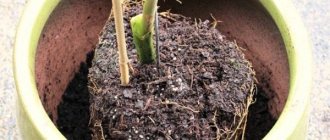The lemon tree is often grown at home. The plant is distinguished by its relative ease of care and the ability to bloom and bear fruit even in a pot. During flowering, the lemon looks even more impressive than during fruiting - it is covered with many delicate white flowers with a delicate aroma. After flowering, ovaries and bright fruits appear.
If the lemon does not bloom, it means that the citrus grower made mistakes in care. This process is influenced by various factors. Knowing about them, even a beginner can achieve the desired effect. Read on to find out what to do if the lemon does not bloom.
Why lemons don't bloom at home
The first flowering of lemon, subject to proper care, is observed 3-7 years after planting, depending on the variety. At this time, several inflorescences form on the plant. Then their number increases. If the plant feels comfortable, it will bloom every year throughout its life.
Note! If the lemon blooms 1 or 2 years after planting, the inflorescences will have to be cut off. Otherwise, false flowering will take all the strength from the plant, and it will not bloom again soon.
If the lemon does not bloom, it means that the rules of care have been violated. Also, a similar problem often occurs if the tree is still too young. Some varieties bloom only 7-10 years after planting.
Why lemon doesn't bloom:
- Incorrect watering. If you water a lemon with water whose temperature is lower than in the room, the tree will begin to hurt and the inflorescences will not appear. If there is insufficient watering, the plant does not form or sheds inflorescences so that the last moisture does not go to them. With excess and stagnation of moisture, the root system rots and can no longer absorb liquid, which also contributes to the shedding of inflorescences.
- Uncomfortable temperature. Lemon does not bloom at temperatures below +15°C. At the same time, it sheds its inflorescences at temperatures above +30°C. The problem also arises if the tree is standing in a draft or is exposed to sudden temperature changes.
- No wintering. Under natural conditions in winter, the lemon is at rest, during which time it recovers and gains strength for the next growing season. If at home it is not provided with optimal conditions and low temperatures, the tree will be exhausted by spring.
- Lack of fertilizers. Lemon is picky about soil composition. A plant that is grown in a pot does not have enough nutrients from the soil. If you do not fertilize, the tree will not have the strength to form inflorescences. The problem also arises when an excess amount of nitrogen is added, when all the plant’s resources are used to increase green mass.
- Lack of lighting. It is important to provide the tree with 12 hours of daylight. With a lack of lighting, it is able to grow, but will not throw out inflorescences. When exposed to direct sunlight, burns will appear on the leaves and the tree will begin to wither.
- Incorrect formation . Often, for beginning gardeners, the lemon tree does not branch, but grows in the form of one curved trunk with 2-3 shoots. Inflorescences are formed only on branches of the 4th-6th order. This happens because without stimulation by pinching at home, new shoots form extremely slowly. With an excessive number of shoots, all the tree’s energy goes into the formation of green mass, not inflorescences.
- Growing from seeds. In this case, you will have to wait for the first flowering not after 3-4 years (as with vegetative propagation), but after 5-10 years.
- Planting in the wrong pot . If you plant a lemon in a container that is too large at once, it will begin to develop incorrectly and will not bloom.
- No transfers. When replanting, the soil is renewed (salts accumulate in the old soil, preventing the absorption of nutrients) and a pot of suitable size is selected. It will not be possible to force a lemon to bloom in a cramped container and poor soil.
- Diseases and pests. This is one of the most common reasons why lemons refuse to bloom. Typically, such a symptom is caused by infection with fungal diseases, aphids, spider mites and thrips.
Spreading
Homeland - India, China and the tropical Pacific islands. Unknown in the wild. Widely cultivated in many countries with subtropical climates. Cultivated in the Caucasus, on the Black Sea coast, and in Central Asia. Common in greenhouse and indoor culture. Lemon is a perennial, evergreen plant.
There are trees aged 45 years. Indoor lemon cultivation is currently widespread throughout almost all of Russia. The city of Pavlovo-on-Oka, Nizhny Novgorod region, became the center of the spread of indoor lemon culture, known as Pavlovsk lemon. Each tub of trees can produce 10-30 fruits.
We invite you to find out how many centimeters a year cedar grows
There are cases when one tub tree bore 180-200 fruits annually. The fruits of these indoor lemons are of good quality and size, not inferior to the best southern varieties. Pavlovsk lemon is early-ripening, medium-sized, propagated by cuttings. The lemon tree is 150 cm high, crown diameter 75-85 cm, few thorns, fruiting begins in the 3rd year after rooting of the cuttings.
It blooms 2 times a year - in March - April and in October. The fruits ripen in 8-9 months during the period November – May. In addition to Pavlovsky, other varieties are suitable for indoor cultivation: Ponderosa (aka Skiernevitsky), Genoa, Lisbon, Lunario, Novogruzinsky, Maikopsky, Chinese dwarf (aka Meyer lemon), etc.
What to do and how to make a lemon bloom
In order for the lemon to bloom, it is important to get rid of all the factors that prevent it and provide proper care. Most often, it is useful to use a number of tricks in combination.
Temperature and lighting
During the growing season, lemon should be in the temperature range from +18 to +26°C. The optimal indicator is +20…+22°C.
The plant does not tolerate sudden changes in temperature. For example, if you take it outside in the summer without first hardening it, it will begin to hurt and will not bloom. Therefore, before taking the tree outside, bringing it into the house or putting it away for the winter, it is hardened. First, they are taken out to new conditions for 30 minutes, the next day the duration of stay is doubled. Gradually this time is increased to a day. Only after this is the lemon left in a new place for good.
Drafts are also detrimental to the plant. Therefore, you should not open the window if the weather is cool outside.
Note! In summer, lemon feels best on a glassed-in veranda.
Citrus requires 12 hours of daylight. In this case, the lighting should be intense. The plant is best placed on a south, southwest or southeast windowsill. It is not recommended to place it near the north window.
However, the tree does not tolerate direct sunlight. To provide him with comfortable conditions from 12 to 16 o'clock, the window is covered with a translucent curtain.
Watering and humidity
High-quality watering is the key to proper lemon growth . In order for a tree to bloom and bear fruit, it is important to follow the basic rules of soil moisture:
- During the hot season, the tree is watered daily. When it is warm but not hot outside, this is done every other day.
- After each watering, the soil is loosened to destroy the earthen crust, which interferes with normal air exchange in the roots and promotes stagnation of liquid.
- For irrigation, use settled water at room temperature.
- To prevent water from stagnating, the pot must have drainage and special holes.
- The soil is moistened early in the morning or after sunset.
The water is settled not only so that it warms up to room temperature, but also to remove chlorine. This substance causes iron deficiency and chlorosis, which also leads to a lack of flowering.
Experienced gardeners prefer bottom watering, which allows the plant to receive the required amount of moisture. To do this, water is poured not into the pot, but into the tray underneath it.
For a lemon to bloom, watering is not enough. The plant is sprayed daily, and on hot days - in the morning and evening. For spraying, use water at room temperature.
Note! Spraying the stalks with warm water accelerates the ripening of the fruit.
Shaping and trimming
Lemon does not bloom without proper formation. Only the trunk and branches of the first order grow independently at home, and the shoots on which inflorescences form are not formed.
To force the desired shoots to grow, pruning is carried out:
- The main trunk is pinched when it reaches 15-35 cm (depending on the desired height of the tree). The cut site is treated with garden varnish.
- Branches of the first, second and third order are pinched when they reach a length of 10-20 cm. At least 3 buds should remain on each of them. Leave 3-4 shoots of each order, choosing the strongest and healthiest of them.
- Branches of the 4th-6th order are not pinched. Inflorescences are formed on them, the bulk of which are located at the ends.
Pinching stimulates the formation of new shoots. Without this procedure, branches of the required order are often simply not formed.
All cut areas must be lubricated with garden varnish. The trimmings are suitable for propagating citrus by cuttings.
Every year, before or after the growing season, sanitary pruning is carried out. Remove dry, weak and damaged branches.
Transfer
For the first 3 years, lemons are replanted annually using the transshipment method. The plant is taken out of the pot along with a lump of earth and simply rearranged into a container that is 2-3 cm larger than the previous one. Only the old drainage is removed. The missing volume is filled with new soil. For replanting, use a special soil mixture for citrus fruits or a mixture of garden soil, humus and sand. The soil must be disinfected.
Then the tree begins to be replanted once every 2-3 years. It is taken out of the pot and at least 2/3 of the old soil is removed. At the same time, rotting and dried roots are cut off. Drainage and soil are poured into the new pot. The plant is replanted, carefully straightening the root system.
After transplantation, the lemon is kept in a shaded place for at least 2 weeks. It is recommended to limit watering.
Clay containers are best suited. They allow air to pass through and prevent root rot.
Note! If a lemon has stopped blooming, replanting often helps solve this problem.
Feeding
In order for the citrus tree to bloom and bear fruit, fertilizing is used. Stores sell special fertilizers for citrus fruits that contain all the necessary elements, but many citrus growers prepare nutritional formulations on their own.
The basis of mineral nutrition for lemon is phosphorus and potassium. Urea and iron sulfate are also needed. The tree requires magnesium, calcium, zinc, manganese and copper in smaller amounts.
All necessary elements are sold separately in gardening stores. They are simply mixed in the required proportions, after which they are placed in the soil or diluted with water.
The tree also needs organic fertilizers. Usually vermicompost, manure or humus are used.
All necessary microelements are contained in products used in folk remedies. The list contains three options for fertilizers that can be used to feed a lemon so that it blooms:
- Fish broth. 300 g of fish or fish waste is boiled for half an hour in 1 liter of water. The broth is filtered and, after cooling, used for watering lemons.
- Potassium permanganate. The tree is periodically watered with a light pink solution of potassium permanganate.
- Tea. Pour 1 tbsp into the pan. l. black tea, 2 banana skins and 1 tbsp. l. nettles The mixture is boiled for 15 minutes. and let it brew for 24 hours. Then filter and use for watering.
Fertilizers are applied once every 1-2 weeks. This is done in the morning or evening when the sun is inactive. Be sure to water the plant first.
Wintering
It is advisable to ensure that the citrus is dormant every winter. During this time, it will have time to recover, and in the spring it will begin to actively throw out new shoots and bloom.
To provide the lemon with optimal conditions for wintering, it is taken into a draft-free room with a temperature of +5...+10°C. With such indicators, it does not require additional lighting and feeding. It is enough to water the plant 1-2 times a week.
If it is not possible to place the tree in a room with a low temperature, it is important to provide it with optimal conditions for growth during the winter. To compensate for the lack of light, 2 phytolamps are installed opposite the plant at a distance of 20 cm. They are turned on for 5-6 hours a day.
In this case, the soil is watered as it dries, and fertilizing is applied once a month. Place a humidifier or containers of water near the pot.
Graft
If, despite proper care, citrus still does not bloom, grafting will help correct the situation. Usually this procedure is carried out with plants grown from seeds, but sometimes it is also effective with varietal lemons.
The mother tree should already be blooming and bearing fruit, and be absolutely healthy. To obtain a scion, choose a one-year-old branch with semi-lignified but flexible bark.
Both the entire trunk of the plant (if the seedling is no more than 2 years old) and one of its branches are used as a rootstock. The rootstock must also be strong and absolutely healthy.
Diseases and pests
At home, diseases and pests attack lemon much less often than in the garden. However, some problems are possible even if the tree grows in a pot:
- Spider mite. It is detected by cobwebs on the back of the leaves. Small, usually red, insects may also be seen.
- Aphid. Entire colonies of the pest cling to the leaves and young shoots of the plant, so it is not difficult to detect them.
- Thrips. Small black or transparent insects. If you blow into the pot, you can notice their movement.
- Fungal diseases. Most often, lemons at home are affected by sooty fungus and anthracnose.
To get rid of pests, the tree is washed in the shower, then treated with insecticides or folk remedies (soap solution). To combat fungal diseases, fungicides or folk remedies with an antifungal effect are used (for example, a solution of milk with iodine).
Igor
07/30/2020 at 01:01 |
In our house, a lemon that was grown from a seed did not bloom for 10 years, and as a result disappeared. If a cultivated bud had been immediately grafted onto it, then, in the third year, lemongrass would have already appeared.
Answer
Yulia expert horticulture
07/01/2020 at 22:39 |
Hello, Igor! Whether a plant grown from a seed will bear fruit depends on many factors. But, even if all the required conditions are met, fruiting can be expected no earlier than in 5-7 years.
You are absolutely right, if you graft a lemon tree, you can get a harvest much faster. You can try planting several seeds at once, then getting fruit will become more likely.
If you manage to grow a healthy plant from a seed, you can propagate it by cuttings. It is believed that lemon trees obtained in this way produce crops faster and more readily.
You only need to take planting material from a blooming lemon. Therefore, if your pet has never bloomed, you can specially buy a cutting. It is best to carry out such work in early spring.
For rooting, you need to pour a layer of drainage on the bottom of the container, then light fertile soil, and sand on top. Before planting cuttings, it is better to leave them in a solution of a root formation stimulator for a day.
It is better to create a greenhouse effect by covering a container with an already planted plant with film, a bag or a bottle. It is necessary to make several holes in the shelter so that the cutting does not suffocate. Also, once a day it is worth carrying out full ventilation.
The optimal temperature is 23-25 degrees. The plant needs to be sprayed with warm water every day. In the first 10-15 days, it is better to carry out this procedure several times a day.
After successful completion of rooting, new young seedlings should be transplanted into a permanent pot. It is important to keep the lemon in a shaded place for the first 12-15 days. You need to gradually accustom him to the light.
Answer
We invite you to read: Why is juniper needed and how to use it?











